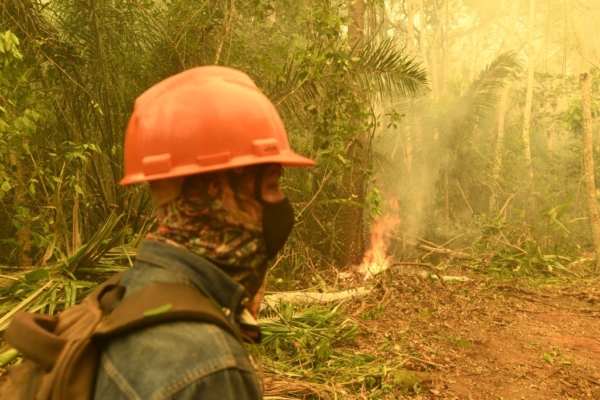This year, wildfires in Bolivia have already burned over 10 million hectares (24.7 million acres) of land, with most located in the tropical eastern region of the country. This surpasses the record for the most severe fire season in the country’s history, with the burned area equivalent to the size of Iceland or Cuba.
According to a report by Reuters, new data released by the U.S. non-governmental organization Tierra Foundation on Monday, October 7, shows that the area affected by the fires is equivalent to nearly 19 million American football fields. The wildfires in recent months have surpassed the devastating fire seasons of 2010 and 2019 in Bolivia.
Santa Cruz, a prosperous agricultural region in eastern Bolivia near Brazil, has been the hardest hit by the disaster, with an affected area of nearly 7 million hectares, followed by the nearby Beni province with 3 million hectares.
Following pleas from local authorities, community organizations, and residents for more robust intervention measures, the Bolivian government announced last week that several areas in the eastern region have been declared in a state of national disaster.
The latest government data shows that as of September, 4.6 million hectares of forests and 2.3 million hectares of grasslands have been destroyed. So far, September has been the most severe month for disasters this year.
According to data from Brazil’s National Institute for Space Research (INPE) as of October 6, Bolivia has experienced a total of 82,117 wildfires this year, only 1,000 fewer than the record for the entire year in 2010.
Juan Pablo Chumacero, a researcher at the Tierra Foundation, stated that the disasters that have occurred in eastern Bolivia in recent months are expected to continue at least until October, marking an unprecedented catastrophe for the country.
“This disaster has impacted the lives of thousands of families, farmers, and indigenous people, many of whom have been displaced due to the loss of their homes, crops, livelihoods, as well as air and water pollution,” said Chumacero.
Gonzalo Colque, Director of the Tierra Foundation, added, “2024 will go down in history as the most severe environmental disaster year in Bolivia.”

